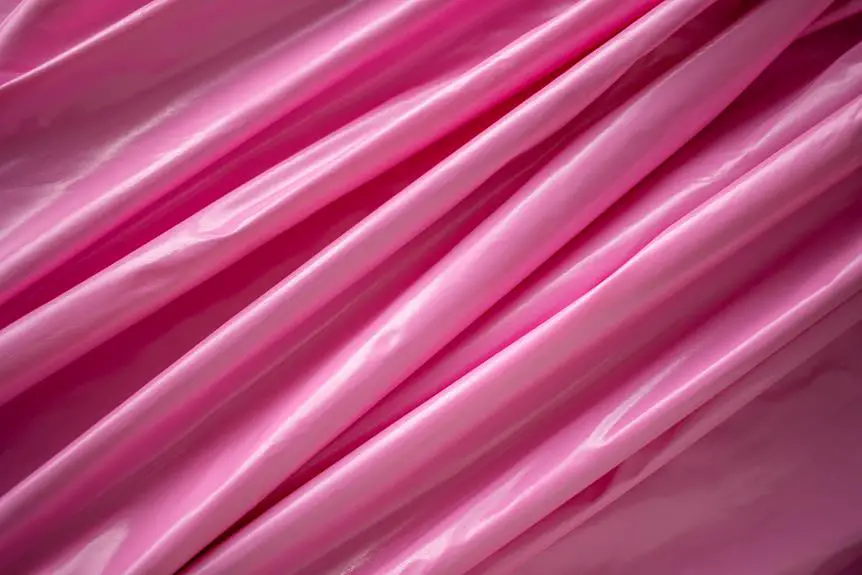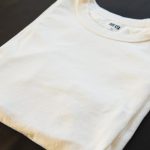If you've ever dealt with dye bleeding from your favorite fabrics, fear not! Mastering the art of setting dye in bleeding fabrics is within your reach.
There are 5 effective methods you can use to ensure those vibrant colors stay put. From the vinegar method to the boiling technique, these tricks will help you preserve the beauty of your garments.
Let's dive into the world of dye setting and discover the best ways to keep those colors from running. With the right approach, you'll be able to confidently tackle any bleeding fabric and maintain its original allure.
Key Takeaways
- The Vinegar Method and Salt Method involve preparing a solution to soak the fabric and rinsing it to remove excess dye.
- Retayne Treatment can be used to set dye in bleeding fabrics by washing the fabric in hot water with mild detergent and rewashing it with Retayne.
- Commercial Dye Fixatives can be used by soaking the fabric in a fixative solution and heat setting it to make the color more permanent and resistant to washing and heat.
- The Vinegar Method and Boiling Technique involve preparing a solution to add to water, submerging the fabric in the solution, soaking it, rinsing it, and drying it thoroughly.
Vinegar Method
To set dye in bleeding fabrics using the vinegar method, you'll need to prepare a vinegar solution and soak the fabric in it. Vinegar is a natural and effective way to help set the dye in your fabrics. Start by mixing one part white vinegar with four parts cold water. This will create a vinegar solution that will help to set the color in your fabric. Make sure the fabric is clean before you begin.
Then, submerge the fabric in the vinegar solution for about an hour. After soaking, rinse the fabric in cold water to remove any excess dye and vinegar. It's important to note that vinegar helps in balancing acidity and can also act as a natural fabric softener.
When using the vinegar method to set dye, it's essential to ensure that the fabric care instructions are followed. Different fabrics may react differently to the vinegar solution, so always check the care label on the fabric to make sure it can be soaked in vinegar.
Additionally, after setting the dye with the vinegar method, it's recommended to wash the fabric separately for the first few washes to prevent any excess dye from bleeding onto other items. Following these steps will help you master the vinegar method for setting dye while maintaining proper fabric care.
Salt Method
First, mix one cup of salt with two cups of cold water to create a salt solution for setting the dye in bleeding fabrics. The salt method is a simple and effective way to enhance color fastness and preserve the fabric. Here's how to use the salt method:
- Prepare the Salt Solution: Mix one cup of salt with two cups of cold water. Stir the solution until the salt is completely dissolved.
- Soak the Fabric: Submerge the bleeding fabric in the salt solution. Ensure that the fabric is fully immersed.
- Let it Soak: Allow the fabric to soak in the salt solution for at least 24 hours. This will give enough time for the salt to set the dye and improve color fastness.
- Rinse and Dry: After soaking, rinse the fabric with cold water to remove any excess dye. Then, air dry the fabric away from direct sunlight.
The salt method is particularly useful for preserving the vibrancy of colored fabrics. By using this method, you can enhance the color fastness of the fabric and ensure its long-term preservation.
Retayne Treatment
For setting the dye in bleeding fabrics, you can consider using a Retayne treatment to improve color fastness and prevent further bleeding. Retayne is a cationic polymer color fixative that helps in fabric preservation and color retention. When you wash a bleeding fabric for the first time, it's common for excess dye to wash out. This is where Retayne comes into play. It works by binding loose dye particles and enhancing dye stability, which in turn helps to lock in the color and prevent it from running.
To use Retayne, start by washing the bleeding fabric in hot water with a mild detergent. Then, rewash the fabric with Retayne in hot water again. This two-step process ensures that the Retayne effectively locks in the dye. After the treatment, make sure to wash the fabric separately to remove any excess dye or Retayne residue. Additionally, it's important to follow the manufacturer's instructions and test the fabric for colorfastness before using Retayne.
Boiling Technique
You can set the dye in bleeding fabrics by using the boiling technique to help lock in the color and prevent further bleeding. This method is effective for enhancing color fastness and ensuring proper fabric care.
Here's how to use the boiling technique:
- Prepare a large pot: Fill a clean pot with enough water to completely submerge the fabric.
- Add vinegar or salt: Depending on the type of fabric, add either vinegar or salt to the water. Use 1 cup of white vinegar for every gallon of water, or 1/2 cup of salt for every quart of water.
- Boil the fabric: Place the fabric in the pot and bring the water to a boil. Let it boil for at least one hour, stirring occasionally.
- Rinse and dry: After boiling, remove the fabric from the pot, rinse it with cold water, and dry it thoroughly.
Using the boiling technique can help set the dye and improve the color fastness of your fabric. Remember to always follow the care instructions for your specific type of fabric to ensure the best results.
Commercial Dye Fixatives
One effective way to further enhance color fastness and prevent dye bleeding in your fabrics is by using commercial dye fixatives. These fixatives are specially formulated to set dyes and prevent them from running or bleeding onto other fabrics during washing. Commercial dye fixatives work by creating a chemical reaction that binds the dye to the fabric fibers, making the color more resistant to washing and heat.
When using commercial dye fixatives, it's essential to follow the manufacturer's instructions for the best results. Typically, the fabric is soaked in the fixative solution and then heat set to ensure the dye sets properly. Heat setting is crucial as it helps to activate the chemical reaction between the fixative and the dye, making the color more permanent.
Frequently Asked Questions
Can I Use the Vinegar Method on All Types of Fabric, or Are There Certain Materials It Won't Work For?
You can use the vinegar method on all types of fabric, but it may not work well for silk fabrics. However, it is effective for wool materials. Always test a small area first for best results.
Will the Salt Method Affect the Color of My Fabric, or Is It Safe to Use on All Colors?
The salt method won't affect fabric color and is safe for all colors. It helps set dye and prevent bleeding. Simply add salt to the wash. This method is effective and won't compromise the vibrancy of your fabrics.
Are There Any Fabrics That the Retayne Treatment Should Not Be Used On, or Is It Safe for All Types of Material?
Retayne treatment is safe for most fabrics, but avoid using it on delicate silk and wool. For synthetic fabrics, the vinegar method can be effective. Always check fabric care labels and test a small area first.
Is There a Specific Type of Fabric That Should Not Be Treated With the Boiling Technique, or Can It Be Used on Any Fabric?
The boiling technique can work on most fabrics, but some delicate materials may not be suitable. It's essential to test the fabric compatibility before using this method. The vinegar method is often a safer option for a wider range of materials.
Are There Any Commercial Dye Fixatives That Are Not Recommended for Use on Certain Types of Fabric, or Are They Safe for All Materials?
When using commercial dye fixatives, it's essential to consider fabric compatibility. Some fixatives may not be suitable for all materials. For specific fabric types, like silk or wool, material-specific dye techniques or the vinegar method may be recommended.
- Daily Use Products Made of PET Nonwoven Fabric - July 11, 2025
- What Ink Is Best for Printing on PP Woven and Nonwoven Bags? - July 11, 2025
- How to Draft a Glove Pattern for Nonwoven Fabrics - July 11, 2025







